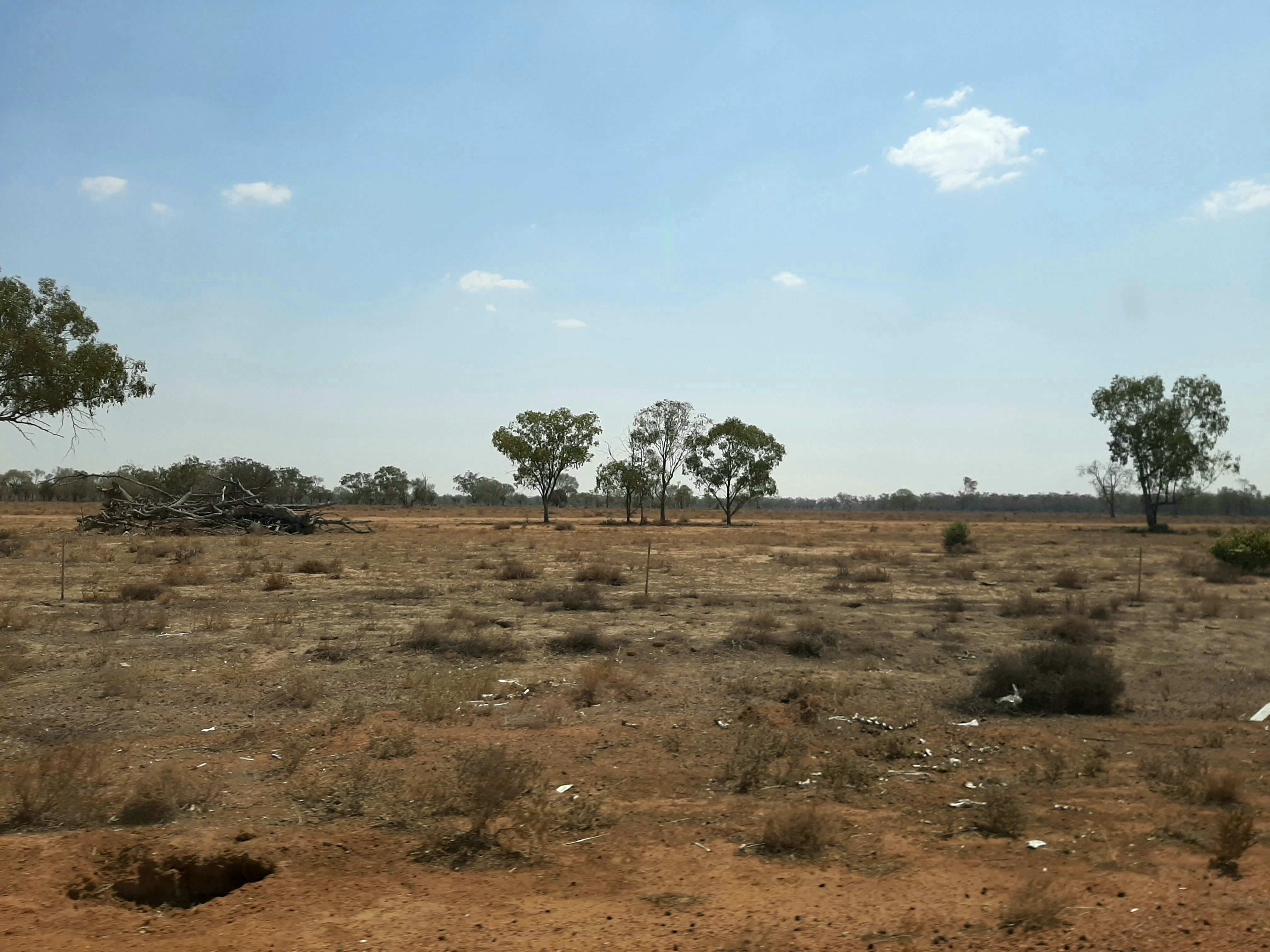Across Australia, people living in regional, rural and remote communities are 24 times more likely to be hospitalised as a result of family and domestic violence than people living in major cities. In this article, Hannah Robinson from Western NSW Community Legal Centre explores the often unacknowledged prevalence and catastrophic impact of family and domestic abuse on regional, rural and remote communities and what governments can and should do to address it.

COVID-19 has presented enormous challenges to people in Australia and around the world – a health pandemic, an economic crisis and unparalleled restrictions on movement and civil liberties. But for those working in the women’s safety space, one of the greatest concerns is the heightened risk faced by women and children of family and domestic abuse. In regional, rural and remote communities, where rates of family and domestic violence are higher, access to support and services severely limited in the best of circumstances, and geographic isolation a driving and reinforcing factor of psychological abuse, this risk is compounded ever further.
This article summarises the first part of Western NSW Community Legal Centre’s recent submission to the Federal Government inquiry into family, domestic and sexual violence. It explores the often unacknowledged prevalence and catastrophic impact of family and domestic abuse on regional, rural and remote communities and calls on the NSW and Commonwealth Governments to urgently fund additional family and domestic violence prevention and intervention services in regional and remote communities.
Regional and remote areas experience high rates of domestic and family violence
In NSW, one in two domestic violence related assaults, and 47 of the top 50 local government areas with the highest rates of domestic violence assaults, are outside metropolitan Sydney. While across Australia, people in remote and very remote communities are 24 times more likely to be hospitalised for family or domestic abuse than people in major cities.
It’s not a title that any region wants to have, but the Far West and Orana Region is the worst in NSW for family and domestic violence. In recent years it has had the highest rate of domestic violence related assaults of any geographic region in NSW (over three times NSW's overall rate for). It also has the highest number of domestic violence incidents occasioning grievous bodily harm. In the 12 months to March 2020, Coonamble, Walgett, Broken Hill and Dubbo Regional council areas, in particular, ranked as four of the top five local government areas for highest rates of domestic violence related assault, with rates up to 7.5 times higher than the state average.
Isolation, distance and lack of services and social values make escaping violence virtually impossible
However, this data only tells half the story of regional and remote experiences of family and domestic abuse. In these communities, the increased risk of physical harm, geographic isolation, social and cultural norms and structures, and the distinct lack of services and support all combine to trap women, physically and psychologically, in violent relationships.
Geographic isolation
For many people, it is difficult to comprehend the extent of isolation and sheer distances in remote areas and the physical barrier these create to accessing help. Bourke is a town of 2,500 people which had 99 reported incidents of domestic violence related assaults in 2019-2020. It is 375 kilometres from the closest regional hub, Dubbo, where most support services are centrally located. (That is the distance from Sydney to Newcastle, and back again, plus an extra 50 kilometres).
Lack of services and support
In many towns, crisis support services including health, housing and legal services are extremely limited. In others, demand for services is so great that they are always running over capacity, are only able to provide bare minimum support and women and children who are not in emergency situations can be turned away. In Dubbo, the wait-time for an appointment with a female GP is often 2-3 weeks; the wait for an urgent legal appointment can be 3-4 weeks; the wait for a public psychologist/psychiatrist appointment is 3 to 6 months; and for social housing it is over 10 years.
Lack of police presence
Many remote towns do not have a 24-hour staffed police station and others may only ever have one officer on duty. This means it can often take over an hour for police to arrive. When help is that difficult to obtain, it can be safer not to call for help at all. The limited permanent police presence can also undermine the effectiveness of Apprehended Domestic Violence Orders because police are not physically present to enforce the orders.
Privacy concerns
Small social circles in remote towns where ‘everyone knows everyone’ mean that it is highly likely that police, health workers and other support workers will know both the offender and the victim. This contributes to a heightened culture of underreporting of violence as victim-survivors fear that a report of abuse will not be taken seriously or that the person to whom the report is being made will take the perpetrator’s side (including by saying “I know [X] and he would never do that”). Many victim-survivors do not want to be seen attending a police station, court, women’s shelter or other support service over fear of community judgment and/or backlash.
Conservative social values
Conservative and patriarchal attitudes towards gender and family roles, including that individuals should be ‘stoic and self-reliant’, that family and domestic abuse is a private matter, and that a man controls finances and the household tend to be more dominant in rural communities. As a result, there is an increased likelihood of unequal power relations between men and women. This can make it more difficult for women to recognise they are being abused, can heighten stigma and silence women from disclosing abuse.
In regional and remote areas, perpetrators often take advantage of these issues to reinforce abuse and psychologically control victims. This can include reminding victims that no one will hear them scream, telling them that no one will help or believe them, reinforcing that they have nowhere to escape to, and threatening that if they do try to leave the perpetrator will shoot them. Many victim-survivors of family and domestic abuse, regardless of geographic location, feel like they have no choice but to stay in a violent relationship. But, for victim-survivors living 300 to 400 kilometres from a regional hub, in areas with high rates of gun ownership, with no access to money or transport, and who at the height of COVID-19 were being told not to leave their homes or communities, reporting the violence, let alone escape, is simply not possible.
Governments can and must act to support women and children experiencing domestic and family violence in regional and remote communities
While the full impact of COVID-19 on experiences of family and domestic violence remains unknown, the increased danger faced by women and children in violent relationships needs to be urgently acknowledged and addressed. In Western NSW, COVID-19 has seen many centrally-located services suspend outreach programs for almost 6 months now. While phone services are being offered, for women stuck in a house, in a remote town with the perpetrator, telephone advice is more likely to be a danger than a help. Urgent action is needed to ensure that women and children experiencing violence within these communities are safe and supported.
This article has shed light on the distinct and complex experiences and needs of victim-survivors of family and domestic violence in regional, rural and remote areas. However, their experiences, and the lack of services available to support them, are often overlooked in government policy responses.
The Fourth Action Plan 2019-2022 of the National Plan to Reduce Violence against Women and their Children 2010-2022 has as its third priority, to ‘respect, listen and respond to the diverse lived experience and knowledge of women and their children affected by violence’. Yet, no mention is made in the National Plan of the rates or severity of family and domestic abuse against women and children in regional, rural and remote communities. Only fleeting mention is made of geographic isolation as a driving and reinforcing factor of family and domestic abuse. As Elizabeth Broderick, then Sex Discrimination Commissioner, observed in 2013, ‘the risk of not drawing attention to the realities of rural women’s lives is that our responses to domestic and family violence will ultimately prove ineffectual.’
The NSW and Commonwealth governments must recognise the prevalence of, and distinct challenges faced by, women and children escaping family and domestic abuse in regional, rural and remote communities and provide additional, long-term funding to support local intervention and prevention services, including housing, legal, financial and health support services.
Further Reading
- Western NSW Community Legal Centre's Submission to the federal inquiry into family, domestic and sexual violence
- Elizabeth Broderick, 'Rural responses to rural challenges: The need for a contextualised response to family and domestic violence' (19 February 2013)
- Monica Campo and Sarah Tayton, 'Domestic and family violence in regional, rural and remote communities' (December 2015)
- ABC, 'Why domestic violence rates intensify the further west you go in NSW' (December 2019)
